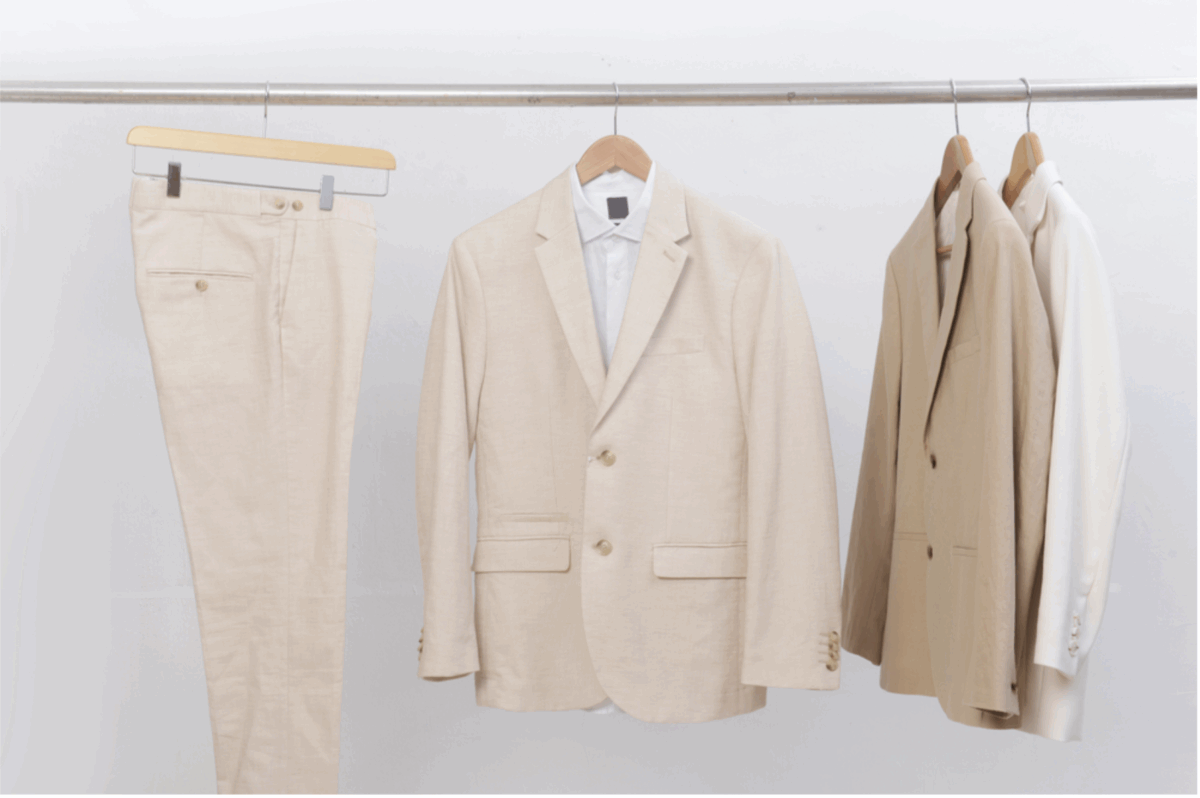Cotton gets all the attention, but it’s not the only fabric you probably have hanging in your closet. While cotton shirts dominate most men’s wardrobes, the fashion world offers incredible alternatives to cotton that can transform how you look and feel. Each material brings its own personality to your outfit, and knowing when to reach for what separates the guys who look good from those who look effortless.
Think of fabric choice as your secret weapon. The right material can keep you cool during summer meetings, add texture to winter outfits, or help you nail that perfect weekend look. Instead of defaulting to the same old cotton button-up, let’s explore five game-changing fabrics that deserve space in every modern man’s wardrobe.
1. Linen: The Effortlessly Cool Champion
glamour/Shutterstock.com
Linen enters the room with confidence that can’t be faked. This natural fiber breathes like nothing else, making it your best friend when temperatures climb. Linen suits are the unofficial uniform of the well-dressed summer guy, and for good reason—they look sophisticated without trying too hard.
Linen’s loose weave allows air to flow freely around your body. While other fabrics trap heat and moisture, linen actually becomes more comfortable as the day progresses. Sure, it wrinkles, but that’s part of its charm. Those creases tell the story of a man who lives his life instead of hiding behind perfectly pressed perfection.
Styling linen shirts requires a different mindset than cotton. Roll those sleeves, leave an extra button undone, and stop worrying about looking pristine. Linen’s natural texture adds visual interest to any outfit, whether you’re pairing a white linen shirt with dark jeans for weekend drinks or throwing a linen blazer over chinos for casual Friday.
2. Wool: The Year-Round Workhorse
Wool adapts to your body temperature like a personal climate control system, keeping you warm when it’s cold and surprisingly cool when temperatures rise. Merino wool, in particular, has revolutionized modern menswear with its exceptional softness, versatility, and thermoregulation properties.
The secret is wool’s natural crimp and fiber structure. Wool fibers trap air for insulation while wicking moisture away from your skin. This means wool works beautifully in air-conditioned offices during summer and provides warmth during winter commutes.
Different wool weights serve different purposes throughout the year. Lightweight wool shirts and polos bridge the gap between seasons. Medium-weight wool works perfectly for blazers and trousers, while heavier weights are ideal for winter coats and chunky sweaters.
3. Polyester Blends: The Modern Performance Player
Before you roll your eyes at polyester, consider this: today’s blends are nothing like the shiny, uncomfortable fabrics from decades past. Modern polyester blends combine the best qualities of natural and synthetic fibers to design garments that outform those constructed using either material alone.
Polos made with polyester blends have given the golf course and weekend wardrobes a much-needed refresh. These shirts resist wrinkles, dry quickly, and maintain their shape wash after wash. Synthetic fibers add durability and moisture-wicking properties, while cotton and other natural fibers provide comfort and breathability.
The real advantage of polyester blends lies in their practicality. Travel frequently? Polyester-blend shirts are wrinkle-resistant, which means they will emerge from suitcases looking fresh. Active lifestyle? These fabrics move with you without restricting movement or showing sweat stains. Busy schedule? They require minimal care while maintaining a polished appearance.
Sandu Herta/Shutterstock.com
Quality matters enormously with polyester blends. Well-made versions feel indistinguishable from their all-natural counterparts while offering superior performance. Look for blends that combine polyester with cotton, wool, or bamboo for the best balance of comfort and functionality.
4. Seersucker: The Textural Standout
Seersucker brings personality to any wardrobe with its distinctive puckered texture and inherent coolness—both literally and figuratively. This cotton fabric’s unique weave creates tiny air pockets that keep the material away from your skin, providing natural ventilation that makes hot weather more bearable.
While they may seem like an aesthetic feature, the raised and lowered stripes that define seersucker serve a practical purpose. These variations in the weave prevent the fabric from lying flat against your body, improving airflow and reducing that sticky feeling you get with smooth fabrics on humid days.
Traditionally associated with Southern style and summer weddings, modern seersucker has expanded far beyond its regional roots. Contemporary cuts and color variations make seersucker shirts, shorts, and even blazers appropriate for all sorts of occasions. A navy seersucker blazer paired with a white shirt, for example, creates a sophisticated summer look that transitions seamlessly from brunch to evening events.
5. Performance Materials: The Athletic-Inspired Innovation
Athletic wear has infiltrated everyday fashion, and performance fabrics are leading this comfortable revolution. These engineered materials bring gym-tested benefits to traditional menswear silhouettes, creating pieces that look professional while feeling like your favorite workout gear.
Moisture-wicking technology forms the foundation of most performance fabrics. These materials pull sweat away from your skin and move it to the fabric’s surface, where it evaporates quickly. This keeps you dry and comfortable during long commutes, stressful presentations, or active weekends.
Stretch properties distinguish performance fabrics from traditional materials. Whether it’s a dress shirt with just enough give for comfortable movement or pants that flex with your stride, these fabrics adapt to your body instead of restricting it. The result is clothing that looks tailored but feels like loungewear.
The Modern Man’s Fabric Strategy
nikkimeel/Shutterstock.com
Smart style starts with smart fabric choices. Cotton will always have its place, but limiting yourself to one material means missing out on the comfort, performance, and style benefits that other fabrics provide. Each material in your wardrobe should serve a specific purpose and excel in particular situations.
Your clothing should work as hard as you do, and choosing the right fabrics ensures it does. Whether you’re building a professional wardrobe, expanding your weekend options, or simply wanting to feel more comfortable in your own skin, understanding these fabric types gives you the knowledge to make choices that truly serve your lifestyle and help you love the way you look.

